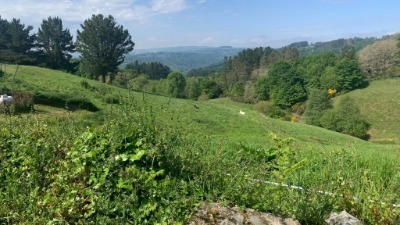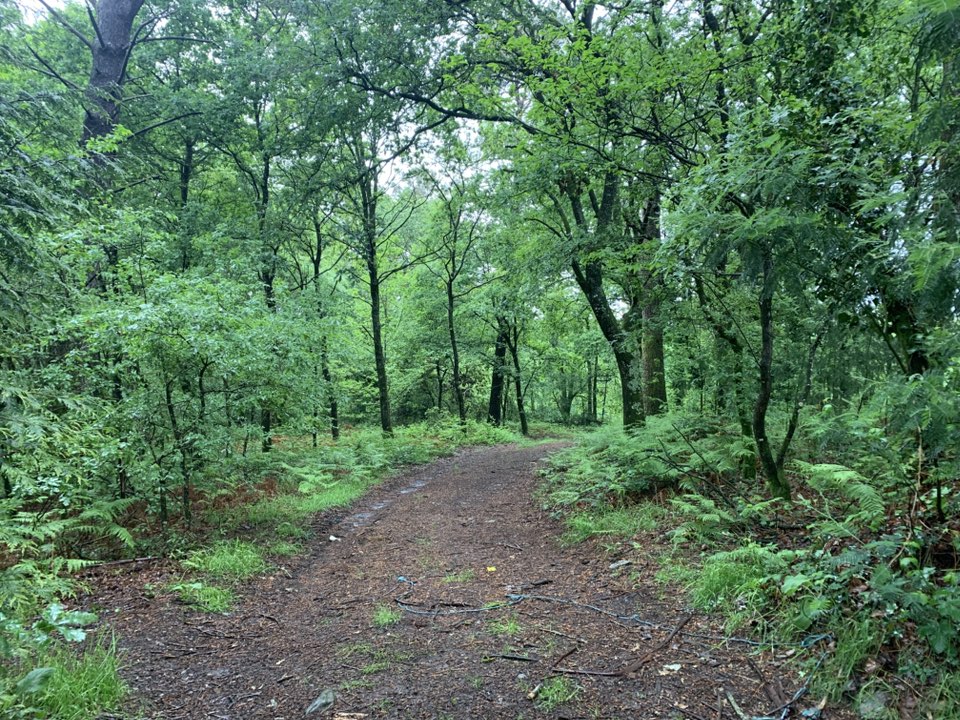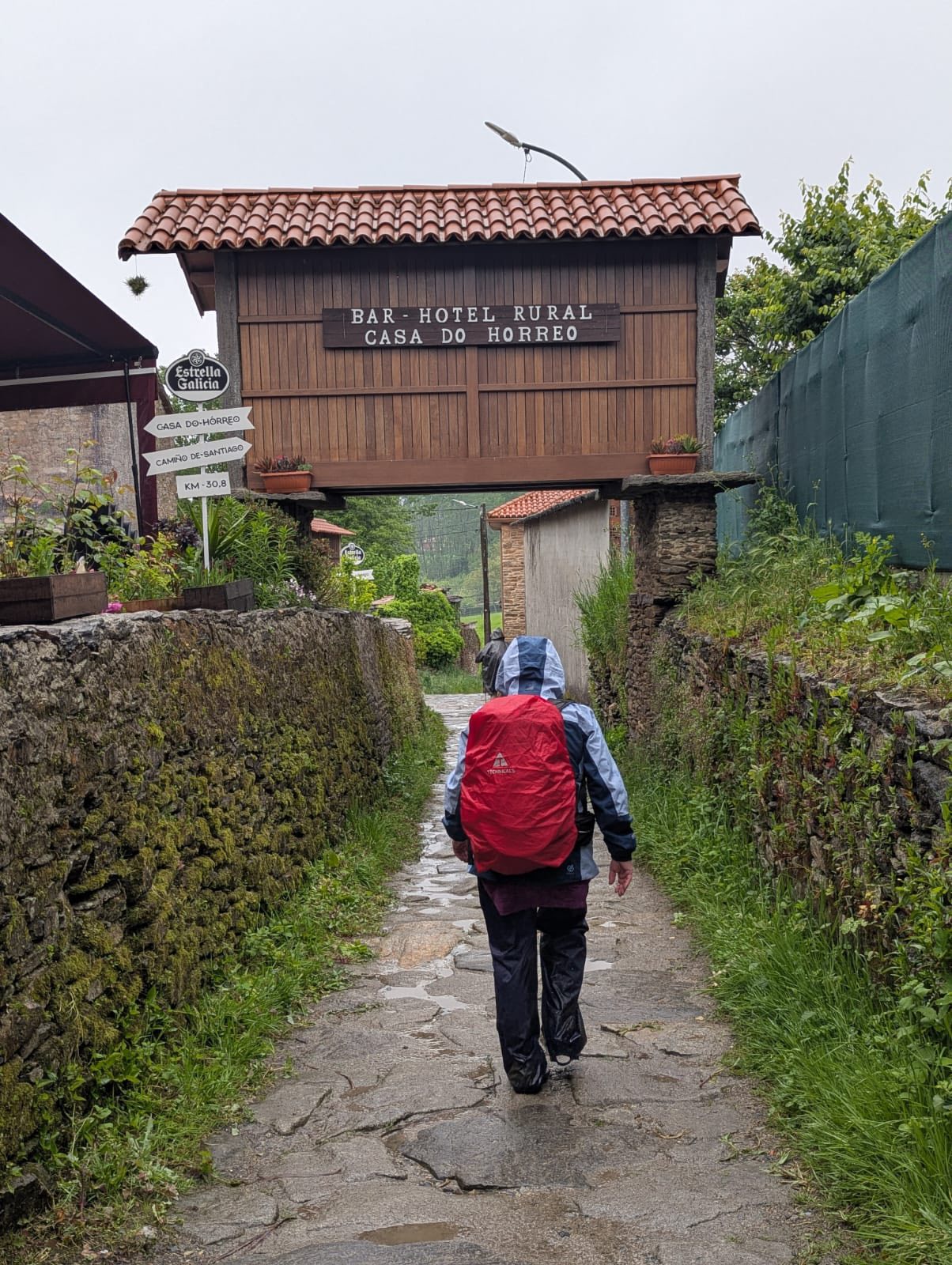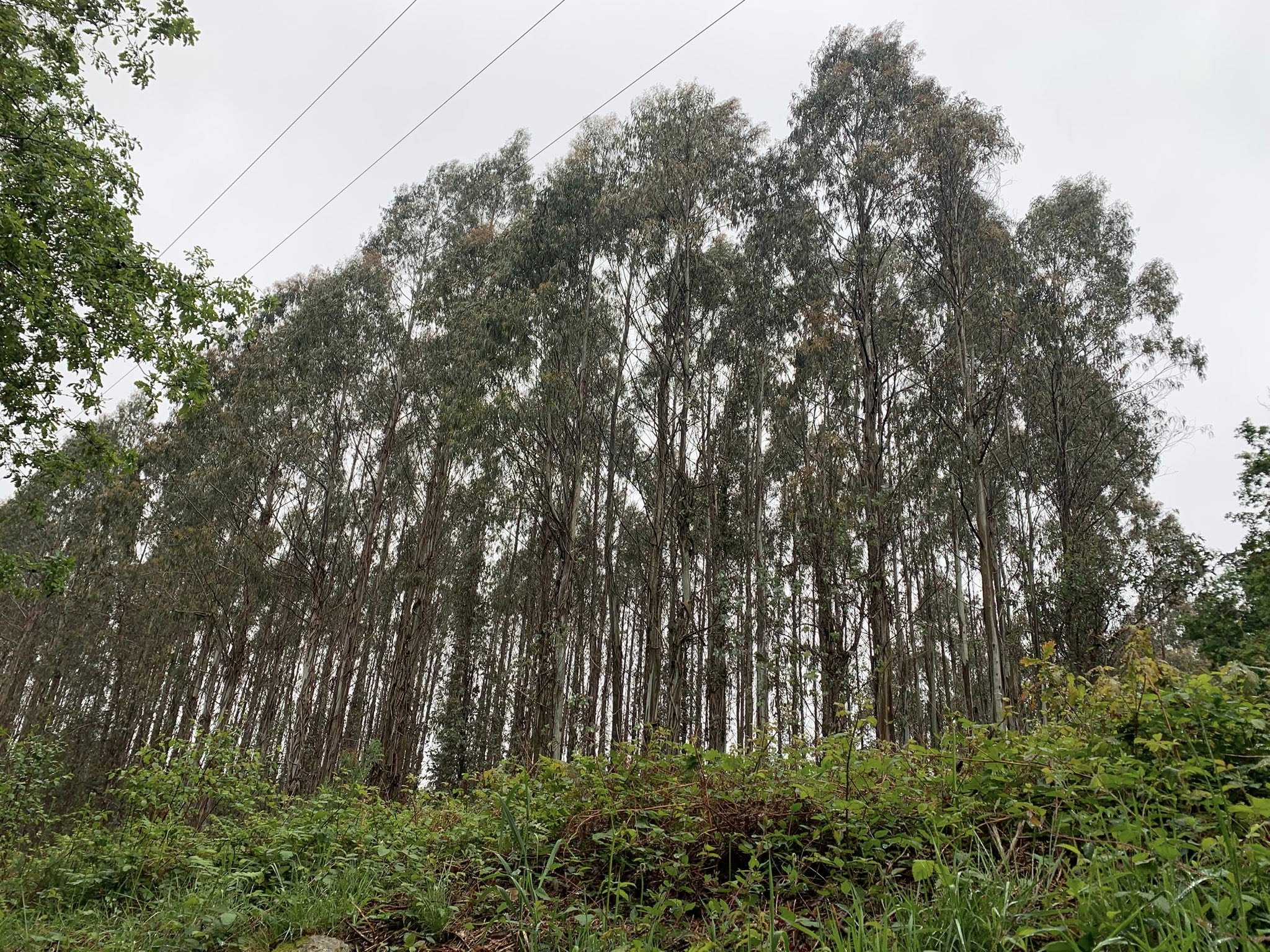Pilgrimage Part 2
Walking The Camino de Santiago
 In Part 1, I explained that I had walked the last 100 miles of the Camino de Santiago in May 2025 with my son, which was for him a lifetime’s dream. I also outlined the biblical foundations of Pilgrimage and especially how the ‘cult’ of St James established the present-day Camino de Santiago as a favourite destination for thousands of would-be pilgrims from around the world today. In this instalment, we consider why people do it.
In Part 1, I explained that I had walked the last 100 miles of the Camino de Santiago in May 2025 with my son, which was for him a lifetime’s dream. I also outlined the biblical foundations of Pilgrimage and especially how the ‘cult’ of St James established the present-day Camino de Santiago as a favourite destination for thousands of would-be pilgrims from around the world today. In this instalment, we consider why people do it.
Reasons for Making Pilgrimage
One might well ask; ‘Does the increase in interest in people making pilgrimage on the Camino show an increase in the numbers of those seeking God?’
Clearly the Camino’s foundation is in a Catholic shrine, but a great many of those walking the path today are definitely not Roman Catholic or currently of any faith at all. Rather, the reasons people embark on the Camino are many and varied:
-
Physical: Some do it simply for the walk, for fitness and health reasons, or to take time out from the normal routine of life. The camaraderie – the giving and sharing of life on the road - is a large part of why they do it. One person said to me of evenings spent in the pilgrim Albergues (hostels) “That’s where the magic happens!”
-
Emotional: Others do it to ‘find’ themselves, to clear their heads and explore their inner self through self-examination, or to ‘deal’ with life-changing events such as redundancy, illness, recovery, retirement, loss of a relationship, grief or trauma. These pilgrims are determined to lay down their burden and return home different in some way.
-
Spiritual: Others do it for primarily spiritual reasons – for the devout Catholic the reasoning is largely one of obligation – to reach the shrine itself is their goal; some are genuinely seeking to explore the whole concept of ‘faith’, which means the Camino is an extremely open and easy environment for sharing one’s faith in Jesus, who Himself is The Camino - the Way. Others, who are already committed Christians, simply want to spend time set aside from the norm to intentionally draw closer to God – to hear His voice, to receive direction, to be healed, refreshed and restored through the deepening of their personal relationship with Him.
Of course, one’s reasons for walking the Camino can be a mix of two or three of the above. For all of those I met and talked to – even those who denied any form of personal faith – everyone agreed in the end that the journey had caused them to consider the bigger issues of life and death; what faith is or who it is found in. One pilgrim said, “We’re not here for the walk, we’re here to experience something.”
More than once I was reminded of lemmings because literally no-one walked in the opposite direction!
My son and I were only walking one hundred miles of the much longer route. But from the marker point where this becomes the official final 100 km of the path, it meant we were joined by literally dozens of souls, all walking in the same direction, all intent on making it to Santiago, all having their own personal reasons for doing so. More than once I was reminded of lemmings because literally no-one walked in the opposite direction!
Walking the well-defined track, along with the sheer unrelenting  volume of pilgrims, means that there is absolutely no need to have to navigate the trail; all that is required is to follow the long line of people disappearing into the distance! After two days of this, my son and I deliberately broke away from the ‘pack’, choosing to not stay overnight in the main towns but, instead, to stay in tiny hamlets. Of course we weren’t the only ones to think of this, but it did mean that we found the personal space to walk in isolation and pray alone or together as we felt led.
volume of pilgrims, means that there is absolutely no need to have to navigate the trail; all that is required is to follow the long line of people disappearing into the distance! After two days of this, my son and I deliberately broke away from the ‘pack’, choosing to not stay overnight in the main towns but, instead, to stay in tiny hamlets. Of course we weren’t the only ones to think of this, but it did mean that we found the personal space to walk in isolation and pray alone or together as we felt led.
In this way, pilgrims have the opportunity to work through whatever reason lies behind their Camino and to consider what comes next. For example, it is possible to find yourself walking alongside a stranger, to begin to chat and for them to open up their heart to you, to then share your mutual stories - to just be yourself, without any mask - because you are never likely to meet each other again!
So, all that’s required from each day is to walk, eat, think or pray, rest, sleep; and to keep on repeating that pattern day after day until the journey is over. It’s all about taking the journey. We were delighted to find one Albergue which was run by volunteers from a U.S. based charity. They provided beds, food and showers completely free of charge, as well as offering to pray with and for any pilgrims who requested that type of help. That is just one example of how God is most definitely at work on the Camino today.
It’s all about taking the journey.
The sheer numbers of those engaging in the process of pilgrimage is, I believe, another part of the quiet awakening that is happening around the world today.
Personal reflections
The last time I had been in Santiago was in 2010 with my husband. We were exploring my probable Celtic Spanish roots whilst also learning a great deal about how to grow and preserve edible food. It had been a special time.
This  time round, my son was dealing with the sudden loss of his father almost two years ago, so each day he walked wearing one of his dad’s jumpers and cap! By accompanying my son, and helping make his dream come true, I was also revisiting places where I had made memories and I wasn’t sure I really wanted to go there. I said to one friend “I’m only going to pay the bills and take the photos!” How wrong I was.
time round, my son was dealing with the sudden loss of his father almost two years ago, so each day he walked wearing one of his dad’s jumpers and cap! By accompanying my son, and helping make his dream come true, I was also revisiting places where I had made memories and I wasn’t sure I really wanted to go there. I said to one friend “I’m only going to pay the bills and take the photos!” How wrong I was.
I had experienced some significant trauma and turmoil over the previous year or two – the sudden death of my husband while I was on an Issachar ministry tour; growing levels of fatigue and sleeplessness; a solo geographical relocation from one end of the country to the other, with all the resulting organisation, stress and problems; six months of chaotic living, as builders moved in to do a vital upgrading of my new house.
Recently, a fairly minor incident with my car showed me just how physically shattered and emotionally fragile I actually was. I googled ‘Post Traumatic Stress Disorder’ and found my very symptoms being described.
I had experienced some significant trauma and turmoil over the previous year or two ...
I’m so grateful to God for stepping in in this way because, even before I set off on the Camino, I had the opportunity to cancel courses, withdraw from unnecessary commitments and spend time in personal prayer - doing exactly what I do with other people every week - praying and talking through with trusted friends the different spiritual connections relating to the trauma I had experienced when my husband died so unexpectedly and the context in which that happened.
When I set off on the Camino, I was still incredibly tired; I can’t say I even wanted to go – I was going for my son. But one of my friends said “It may be exactly what you need.” And he was right.
I chose to carry my backpack, in distinction to the vast majority of pilgrims these days, who pay to get their luggage transported from hostel to hostel. There was never a moment when I was unaware of the 8kg weight: going steeply downhill into our first overnight destination, I had to literally walk holding the pack off my back with my fingers because my shoulders were bruised from it, my right knee threatened to be a problem until I braced it, and I walked with a constant pain in my right hip.
So, before setting off on the second day, I reassessed the contents and quietly chose to discard some of the heavier things. I had made the right decision because on that day we walked uphill for eleven unrelenting miles and still didn’t reach the top! Whilst Britain basked in a heatwave, we walked - days three to six - in the pouring rain, which meant everything we wore and possessed was either damp, wet or utterly soaked. Yet it was wonderful!
Receiving this basic truth afresh, in that context, was powerfully liberating and healing.
Through dealing with these minor issues day by day, I clearly heard the Lord not only remind me that the full weight of the burden of grief and its related trauma which I had been carrying myself – the weight of which was represented by my heavy backpack - had been carried by Jesus to the Cross; like pilgrim in Pilgrim’s Progress, my burden had been removed at the Cross and left in the tomb. Receiving this basic truth afresh, in that context, was powerfully liberating and healing.
Reaching the end of the Camino is for many an anti-climax –  even bewildering and confusing – as suddenly the only goal and focus for daily life for weeks is suddenly removed. But for me it was different because as I walked my Camino with Him, I felt He gradually unfolded to me clear direction for what I am to do next, as well as guidance for how to endeavour to live out of a place of rest rather than work – I’m going to have to work on that!
even bewildering and confusing – as suddenly the only goal and focus for daily life for weeks is suddenly removed. But for me it was different because as I walked my Camino with Him, I felt He gradually unfolded to me clear direction for what I am to do next, as well as guidance for how to endeavour to live out of a place of rest rather than work – I’m going to have to work on that!
He also gave me glimpses of what lies ahead; both in day-to-day life and in ministry. So, despite having walked well over one hundred miles altogether in just nine days, I came home different: rested, content, settled, re-aligned, refreshed, restored and re-envisioned.
I don’t think we have to go all the way to the Camino to meet with God. In fact, I have met Him on almost every walk I take in my locality day by day. But sometimes we can benefit from setting our hearts deliberately towards being with Him intentionally – Psalm 84:5 implies that. We can travel and meet with the Lord on any trail or place; it is not about the location or the route – but about the journey we’re prepared to take and why.
It’s not just about where we place our feet; it must necessarily also include our heart. I certainly met with Him when I surrendered my heart, my need and the process of renewal wholeheartedly to Him.
Would I recommend a pilgrimage? Of course I would!
Sarah Winbow, 06/08/2025